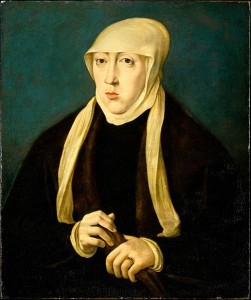
Today I want to share with you an extract from The Fall of Anne Boleyn: A Countdown about the aftermath of the executions of May 1536, the reactions of some people on hearing the news…
Although Cromwell’s propaganda machine had been working flat out, spreading the salacious and shocking news that the King of England had been saved from a conspiracy instigated by his own wife and Queen, there were those who were cynical and could not quite believe the official line.
Etienne Dolet, the French scholar, printer, and Reformer, published an epigram, Reginae Utopiae falso adulterii crimine damnatae, et capite mulctatae Epitaphium (Queen of Utopia condemned on a false charge of adultery, and deprived of an epitaph). He knew of Anne through his friend, Nicholas Bourbon, a French Reformer, poet and scholar, who had been rescued by Anne in 1534 after he had got into trouble in France for his work, Nugae. Bourbon’s release from prison was down to Anne’s influence over her husband, Henry VIII, and once Bourbon was in England she appointed him as tutor to her ward and nephew, Henry Carey. It is likely that it was Bourbon who told Dolet of the events of 1536 and that he knew Anne to be innocent of all of the charges.
The imperial ambassador, Eustace Chapuys, in reporting the trials to Charles V, wrote that the men “were condemned upon presumption and certain indications, without valid proof or confession”, that George Boleyn was charged “by presumption” and that “those present wagered 10 to 1 that he would be acquitted, especially as no witnesses were produced against either him or her”.1 He also reported that “there are some who murmur at the mode of procedure against her and the others”. Therefore, there were definitely those who thought that Anne and the men were framed due to the King’s relationship with Jane Seymour.
Mary of Hungary, Emperor Charles V’s sister, who knew Anne Boleyn from their time together at the court of Margaret of Austria, wrote that “As none but the organist confessed, nor herself either, people think he invented this device to get rid of her” and added, insightfully, that “when he is tired of this one he will find some occasion of getting rid of her.”2 So she too was cynical and thought that Anne’s condemnation was more to do with the King wanting rid of her than any actual guilt.
George Constantine, Sir Henry Norris’s servant, commented that “few men would believe that she was so abominable” and that he had “never suspected”. He also said that “there was much muttering at the Queen’s death”.3
George Wyatt, Sir Thomas Wyatt’s grandson, writing in Elizabeth I’s reign, commented on how those “abroad” found Anne “guiltless”4 and that he, himself, believed the charges of incest and adultery to be “incredible” and “partly by the circumstances impossible”, since Anne was always surrounded by her ladies.5
Martyrologist, John Foxe, also writing in Elizabeth I’s reign, blamed “crafty setters-on”6 for poisoning the King’s mind and turning him against his wife.
As for Henry VIII, he simply moved on with his life, marrying Jane Seymour. Whenever the latter dared to ask him for something he warned her to learn from the example of Anne Boleyn. This was reported by the diplomat Jean du Bellay:
“At the beginning of the insurrection the Queen threw herself on her knees before the King and begged him to restore the abbeys, but he told her, prudently enough, to get up, and he had often told her not to meddle with his affairs, referring to the late Queen, which was enough to frighten a woman who is not very secure.”7
So, according to Henry VIII, the Queen had come to a sticky end from ‘meddling’ rather than being guilty of treason! As Eric Ives8 points out, Henry VIII also admitted years later that once a prisoner was in the Tower of London then false evidence could be used against him. Ralph Morice, secretary of Archbishop Cranmer, recorded the following warning issued by the King to Cranmer in 1546 when the conservatives targeted him and tried to bring him down:
“Oh Lorde God ! (quod the king) what fonde symplicitie have you: so to permitt yourself to be ymprisoned, that every enemy of yours may take vantage againste you. Doo not you thincke that yf thei have you ones in prison, iij or iiij false knaves wilbe sone procured to witnes againste you and to condempne you, whiche els now being at your libertie dare not ones open thair lipps or appere before your face.”9
I find it rather telling that Henry VIII knew that it was ‘the done thing’ to procure false witnesses to condemn a prisoner.
The audio book versions of The Fall of Anne Boleyn: A Countdown and The Anne Boleyn Collection are available at a special offer price of $5 each until the end of May – click here for more details.
Notes and Sources
- LP x. 908
- Ibid., 965
- George Constantine, Archaeologia, or, Miscellaneous Tracts Relating to Antiquity, 23:64–65.
- George Cavendish, The Life of Cardinal Wolsey, Volume 2, 2:448.
- Ibid., p445.
- John Foxe, Foxe’s Book of Martyrs: Acts and Monuments of the Church in Three Volumes, II:407.
- LP xi. 860
- Eric Ives, The Life and Death of Anne Boleyn, p350
- Narratives of the Days of the Reformation, Chiefly from the Manuscripts of John Foxe the Martyrologist; with Two Contemporary Biographies of Archbishop Cranmer, 255.